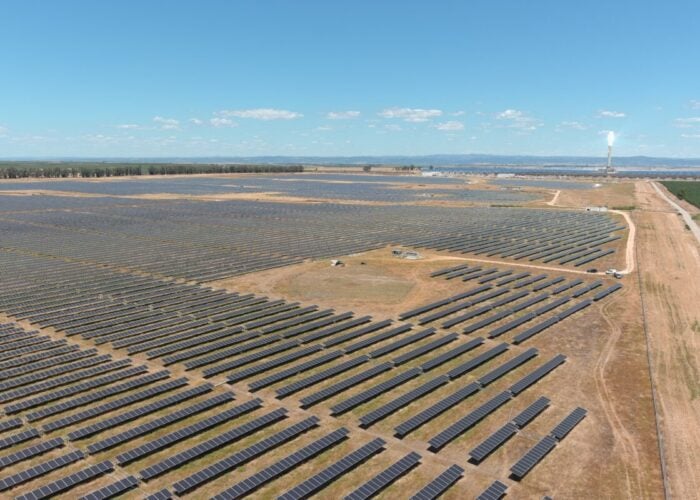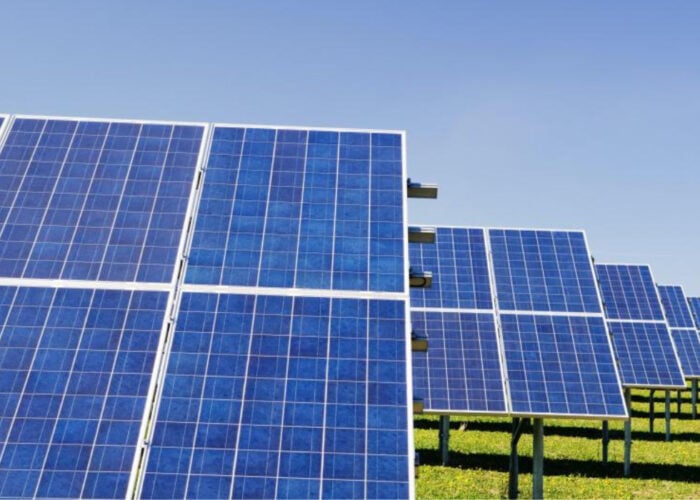
US independent power producer (IPP) Arevon has surpassed 4GW of deployed renewable energy capacity in the US, 3.5GW of which is solar PV.
The company said it has closed US$3 billion in project financing transactions over the last year, including transferability deals under the Inflation Reduction Act (IRA). Earlier this month, Arevon closed a US$300 million transferability deal for the 192MW Ratts 1 and the 60MW Heirloom projects, both in Pike County, Indiana. This followed on from the November deal for the 157MW/150MW Vikings solar-plus-storage project in California, among a number of others.
Unlock unlimited access for 12 whole months of distinctive global analysis
Photovoltaics International is now included.
- Regular insight and analysis of the industry’s biggest developments
- In-depth interviews with the industry’s leading figures
- Unlimited digital access to the PV Tech Power journal catalogue
- Unlimited digital access to the Photovoltaics International journal catalogue
- Access to more than 1,000 technical papers
- Discounts on Solar Media’s portfolio of events, in-person and virtual
PV Tech Premium spoke with Arevon’s COO, Justin Johnson, at this week’s RE+ renewable energy conference in Anaheim, California about transferability credits, the IPP business model, the policies affecting US solar and why the company has built so much in Indiana.
Build, own, operate
Arevon operates as an IPP which designs, builds, owns and operates its solar projects over their lifetimes. What are the advantages?
“There’s advantages at every step of the value chain,” Johnson says. “Starting all the way back in development.
“When you can work with the communities, landowners and tax authorities early on when the project’s just an idea – when you can show them all these assets all over the US, that you’re the long-term owner of this plant and you’re not going to flip it to someone else, that you have the financial wherewithal and the intention to be a long-term partner; that’s the most positive message you can send out.”
A number of developers are pursuing the IPP model, with a view to longer-term investment in solar projects. Notably, Recurrent Energy, a competitor of Arevon and subsidiary of multinational solar manufacturer Canadian Solar, secured a US$500 million equity investment from BlackRock – the world’s largest asset owner – to support a transition to an IPP model.
“It’s not like the market is dead for smaller developers,” Johnson says, “it’s just a different story when you don’t intend to own and operate the asset. You have to just promise that you’re going to find a good owner.”
He continues, saying that long-term commitment to projects is also met favourably by equipment suppliers. “You’re dealing directly with me,” he says, “I want to strike a deal where there’s incentives for both of us. I’m going to be a repeat customer of yours.”
Clearly, long-term supply contracts are becoming a major feature of the US solar landscape, usually conducted between the biggest players (by financial necessity, as much as intent).
Supply and domestic content
Developers (and IPPs) in the US have increasing options from which to buy their products. The US has onshored a significant capacity of both silicon and thin-film module production, as well as trackers, racking and inverters. Developers can receive a 10% tax credit, on top of the 30% production tax credit, if they meet the threshold for domestic content in a project.
“I think it’s awesome for the industry in a lot of ways,” Johnson says, explaining that stable US supply, freed from the geopolitics that rules the global supply chain, allows an IPP to confidently tell an off-taker the price of a project and build confidence in the future.
We asked him whether the domestic content bonus is enough to encourage developers to pursue US supply. Commentary heard by PV Tech Premium on the first day of the show said that the incentive wasn’t high enough to support demand for domestic products.
“I don’t think that’s the case. Because there’s the threshold, right? Even for modules, we could go and buy 60-70% of the modules domestically, and the remaining 30-40% non-domestically, and the plant can achieve the domestic content bonus.”
Voices representing the upstream in the US are calling for the domestic content bonus to be expanded, either by raising the tax reward or expanding its scope to put more emphasis on silicon wafers and create domestic demand.
“That domestic content threshold is going to step up, so that kind of mixing or blending would maybe have to use a higher proportion of domestic in the future,” Johnson says. “But that is occurring for a number of reasons, because there may be some upside financially, and just because there isn’t enough domestic content to go around right now. So you have to use your domestic content in a way that maximises the main project.”
Transferability credits
Arevon has been one of the companies which has leant most heavily into the IRA’s Tax Credit Transferability scheme, which allows green tax credits to be sold for cash. Earlier this year, PV Tech Premium heard that the transferability market “blows the doors open” for project financing.
“It’s democratising access to tax credits, which has been so dominated by a big group of banks,” Johnson says. “The cynical side of me has often wondered who all this clean energy has benefitted over time, and it’s always felt like renewables was a game which tax equity always wins.
“Transferability provides a great opportunity to give more people access to those tax credits and bring more investment into the space, which we really need for our growth target. You need that equity to build these projects, and we need more equity to come into play if we’re going to be successful.”
The scheme can reduce risk for investors, he says, as they take a much smaller stake in multiple projects rather than betting entirely on one. Energy storage and co-located projects can also benefit, too, as a single big bank “like Wells Fargo or JP Morgan” is less likely to take the risk on an entire standalone energy storage system, whereas multiple smaller investors are more likely to support it.
Indiana
The company has invested heavily in the state of Indiana, along with a number of other major developers. In addition to Arevon’s raft of projects in the state, Doral Renewables is building the 1.5GW+ Mammoth solar project in the state.
“I feel like all the big players have a project or two in Indiana these days,” Johnson says. “For us, we bought a development pipeline there early that saw a lot of interest from off takers, because of all the coal retirements that were happening in the MISO (Midcontinent Independent System Operator).
“So as coal transitioned out of the system, they needed some form of capacity to fulfill their energy needs. So having those interconnect positions and development assets in MISO was just a great fit for them.”
As well as good timing to replace retiring coal generation, Johnson said that the progression of solar technology is what made growth in Indiana possible.
“Even if the coal was retiring five years ago, it wouldn’t have really been possible [to develop solar in its place], because the cost would have been so high for the solar and the efficiency wasn’t quite there. Now modules are more productive than they’ve ever been and we’ve reached the point where the LCOE in Indiana really made sense because of the cost and efficiency improvements.
“As those improvements happen, it opens up entire new markets where solar wasn’t really viable before.”
The growth in Indiana seems set to keep coming. State utility CenterPoint Energy issued a request for proposals (RfP) last month for solar, wind and energy storage capacity. Arevon broke ground on a 228MW solar project with CenterPoint in May.







